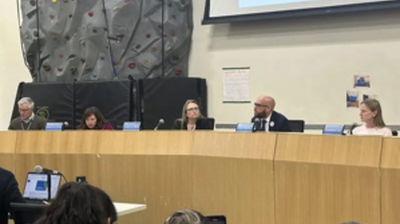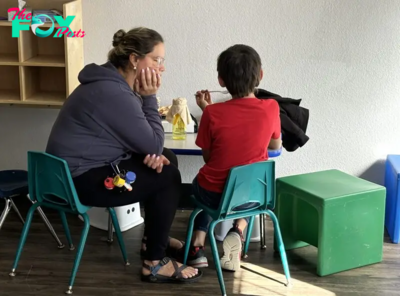Education
Four-day school weeks have exploded across Colorado districts — and are setting students back
The promise of a three-day weekend every week has become a popular tool Colorado school districts are using to lure teachers to their schools and try to keep them there. In the face of strapped budgets and limits on educator salaries, most of the state’s districts have switched to a four-day school week — taking on longer hours each of those four days to make up for cutting out one full day.
But one less day in school each week has taken a toll on learning and has proven lackluster in retaining teachers, according to a report released Tuesday by the Keystone Policy Center.
“There’s an irony that the reason for why you go from five to four (days), at least the reason most people say, is so you can recruit and retain better teachers, which you would think would have an impact on student achievement,” said Van Schoales, senior policy director for the Keystone Policy Center. “But it doesn’t seem to be resulting in higher student achievement, and when you look at the recruitment and retention data, it doesn’t have an impact on the retention either. I’m not sure what the compelling reason is.”
The report has some Colorado superintendents pushing back against claims that shorter weeks are bad for kids. During the 2016-17 school year, Colorado tallied 82 four-day districts, charter schools and Boards of Cooperative Educational Services (groups of school districts that share resources). Six years later, 119 of 185 districts, charter schools and BOCES had adopted four-day weeks, according to the report.
At 27J Schools in Brighton, former superintendent Chris Fiedler said a switch to a Tuesday-Friday schedule in 2018 has reduced the burden on instructors even as student graduation rates have continued to inch upward.
“This myth that we’re going to school less time is just wrong,” said Fiedler, who retired earlier this year after 12 years as the district’s superintendent. “So it’s a longer school day. We’re attending the same number of hours we did before. Teachers actually have more planning time.”
The 21-page Keystone report, titled “Doing Less with Less,” points out ways students in districts with four-day weeks are trailing their peers in districts on traditional five-day weeks. It also acknowledges the difficult reality of staffing classrooms, which often pits the priority of educating students in the ways that help them most against what it takes to draw educators to districts that rank low in compensation.
The move toward four-day weeks has largely come from a sense of desperation as many districts have been unable to meet the comPetitive salaries of neighboring districts and had to find other incentives to attract teachers.
The four-day week option — which emerged in the 1980s when a new state law gave public schools more flexibility over their calendars — is most widely used among small rural districts. While the majority of Colorado districts operate on a four-day week schedule, those districts only account for about 14% of the state’s public school kids since most of them are small and in rural areas.
In recent years, the four-day week has gained more traction among larger districts in more populated parts of the state, including Pueblo and Brighton.
No district approaches the move to a four-day week lightly, said Colorado Education Commissioner Susana Córdova, who was previously superintendent of Denver Public Schools, the largest district in the state.
“Everybody really cares about their kids,” Córdova said, “and I think they’re really feeling like they’re borrowing from Peter to pay Paul in how they’re coming up with solutions.”
“We’re all in this state complicit”
Among more remote districts on four-day weeks is Mancos School District RE-6 east of Cortez in southwestern Colorado. The rural district — which last year educated 521 students in preschool through 12th grade — transitioned to a four-day week in 2016 under the weight of financial pressures. The district’s teacher compensation is about 20% below a bigger district 20 miles to the east and a New Mexico district 20 miles south, Superintendent Todd Cordrey said.
He says student performance depends on more than just the number of days class is in session per week.
“The issue of whether a school system is a four-day system or a five-day system is really not a key factor to the academic performance of the system or the culture of the system,” said Cordrey, who has been superintendent since 2021 and previously led schools that were active five days. “There are many more important factors that contribute to student success as well as the culture of a school district.”

Those include class size, economic factors, special needs of students, screen time and instructional practices, he said.
Other school districts like Eagle County School District have continued on with a five-day school week even as four nearby districts have shifted to a four-day schedule. Superintendent Philip Qualman, who is quoted in the Keystone Policy Center report, said the district has remained competitive with salaries — a starting teacher in his district earns about $50,500 a year — and his community has not pushed for a four-day school week.
He also wants kids “to reach their peak potential” — an aspiration that Qualman said is already challenged by Colorado requiring a minimum of 160 school days for districts, compared to a minimum of 180 days in other states. Colorado districts are falling behind in how much class time they can provide students, he said.
“Compound that over a 13-year public education experience, that’s a lot of disadvantage that our kids are experiencing,” Qualman told The Colorado Sun. “So districts that are doing four-day, I understand that they’re meeting the hour requirement just like five-day districts are, but I think that there’s only so much content that you can expect students to learn in a day and to try to jam it all into fewer days, I think practically it just doesn’t make sense to me.”
-

 Education2d ago
Education2d agoPhiladelphia students have a new reading and writing curriculum − a literacy expert explains what’s changing
-

 Education2d ago
Education2d agoWhy school police officers may not be the most effective way to prevent violence
-

 Education5d ago
Education5d agoCampus diversity is becoming difficult to measure as students keep their race and ethnicity hidden on college applications
-

 Education6d ago
Education6d agoFederal judge rules that Louisiana shalt not require public schools to post the Ten Commandments
-

 Education6d ago
Education6d agoCampuses are ground zero in debates about antisemitism − but that’s been true for 100 years
-

 Education1w ago
Education1w agoSocioeconomic status explains most of the racial and ethnic achievement gaps in elementary school
-

 Education1w ago
Education1w agoMothers, metaphors and dyslexia: What language reveals about the challenges of a child’s learning disability
-

 Education1w ago
Education1w agoBrain-training games remain unproven, but research shows what sorts of activities do benefit cognitive functioning



























